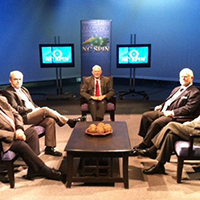Can growth solve our economic problems?
Published November 17, 2013
by Mike Walden, professor of economics, NC State, published in Durham Herald-Sun, October 27, 2013.
I recently had a very interesting conversation with a prominent state leader. The person was picking my brain about various economic issues, one of which is our low rate of economic growth. The leader wondered if boosting the growth rate could be one of the keys to solving many of our problems
Before I address this question, let’s first look at where we stand in North Carolina on economic growth. Long-run, we look pretty good. From 1977 to 2012, the annual growth rate in economic production in our state averaged 3.4 percent, well above the national average of 2.8 percent. The state was also a leader in job creation. Over the same time period, North Carolina’s jobs increased an average of 1.8 percent each year, while jobs in the nation were up only 1.3 percent annually.
The numbers have been less impressive since 2000. A big reason is that both North Carolina and the nation went through two recessions in the first decade of the new century. North Carolina’s economy also had to adjust to changes and dislocations created by international trade agreements.
However, what is often overlooked is how well North Carolina’s economy did in the middle of the 2000s (2003-2008), when there was an economic upswing. Annual job growth doubled that in the nation (1.3 percent vs. 0.6 percent), and the yearly improvement in state economic production was stronger than for the country (2.9 percent vs. 2.3 percent).
The Great Recession is over, and there has been economic growth in the past three years. North Carolina’s aggregate economic production is up an average of 1.8 percent during each of those years, and the growth rate in jobs has actually exceeded the national pace (1.5 percent vs. 1.4 percent). Still, our state has 120,000 fewer jobs than before the Great Recession, and there are more than 400,000 persons officially classified as unemployed.
So our state is growing but not at rates we once were. What if we could grow faster? How much difference would this make? Let’s say, for example, we could boost our annual economic production growth rate from the current 1.8 percent to 3 percent, similar to what it was historically.
This would mean 240,000 more jobs -- on top of those created by the current growth rate -- over the next five years and could cut our unemployment rate in half by 2018.
State budget issues would also be eased with faster private-sector growth. Public revenues available for spending by the state are directly tied to the performance of the economy. Available revenues increase faster when the economy is doing better, and revenue growth stalls -- and sometimes drops -- when the private economy is underperforming. And a stagnant or shrinking revenue pie inevitably sets up clashes between spending categories for pieces of the pie.
Increasing the state’s annual economic growth rate from 1.8 percent to 3 percent would mean more than $280 million more in annual revenue available for spending in the state’s General Fund. This would translate into $100 million more each year for K-12 education, $48 million of additional annual funds for higher education and $68 million more yearly for health care services and assistance.
Sounds good, correct? But the big question is how to achieve this higher rate of growth. If it were easy, it would have been done long ago. Unfortunately, economists don’t have a magic formula. Clearly a better skilled and trained workforce is part of the answer, perhaps today more than ever. But what mix of early childhood education, teacher training, teacher pay, technology and parental involvement gives us the best results? If we can’t do all of these, which ones should receive priority? Educators all around the world are debating this question.
And what about infrastructure? It used to be that roads were the easy answer, and certainly North Carolina’s focus on roads in the past 60 years was a big part of the state’s economic improvement. However, today infrastructure is broader and includes not only highways but also airports, high-speed Internet and access to energy sources like natural gas. Even with faster growth, there are limited infrastructure funds to spend. Where should they go?
Finally, let’s not ignore some of the downsides from faster economic growth. More growth likely means more conversion of open space to developed space, greater demands on our natural resources like water and energy and the possibility of greater pollution.
Also, economic growth isn’t necessarily spread evenly among people and regions. In fact, recently, economic growth has favored higher-income households over lower-income households and cities over rural areas. So while growth may move up the average, it may not improve all parts of that average.
Is economic growth the answer to many of our problems? As always, I’ll let you decide. But even if the answer is “yes,” achieving it may be as elusive as the Cubs winning the next World Series (sorry Chicago fans).







